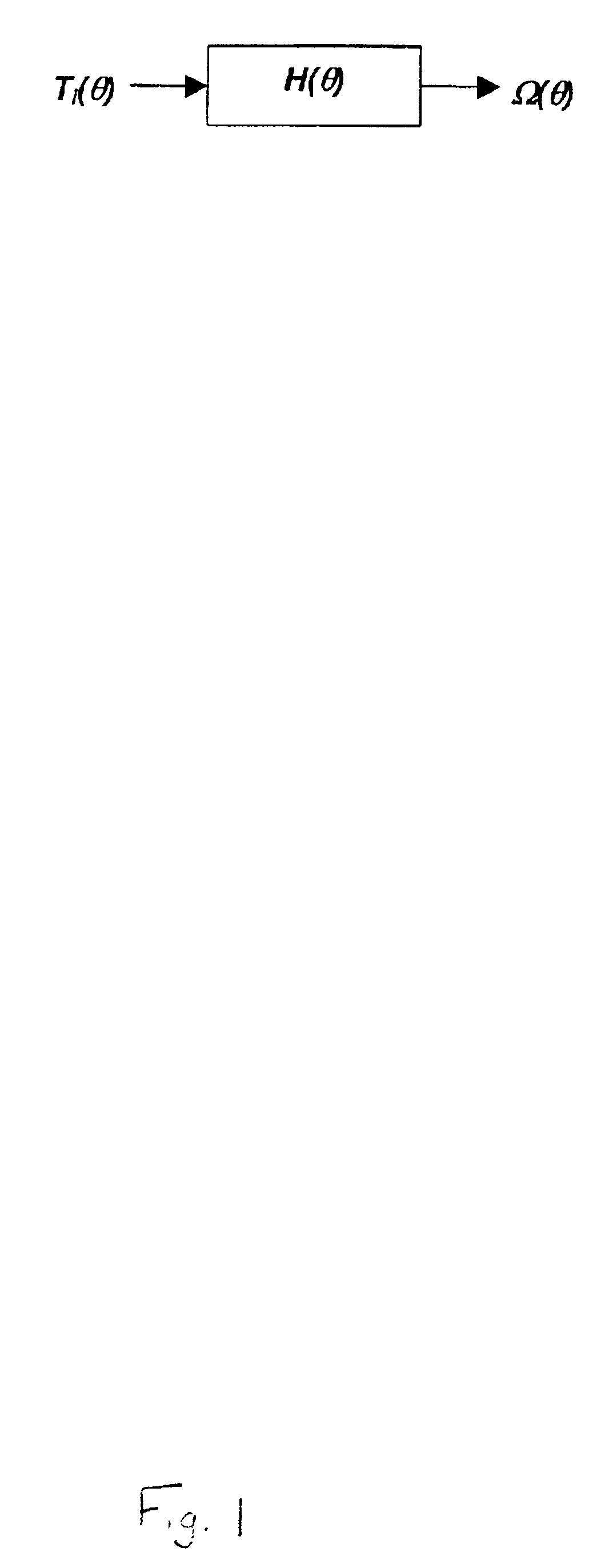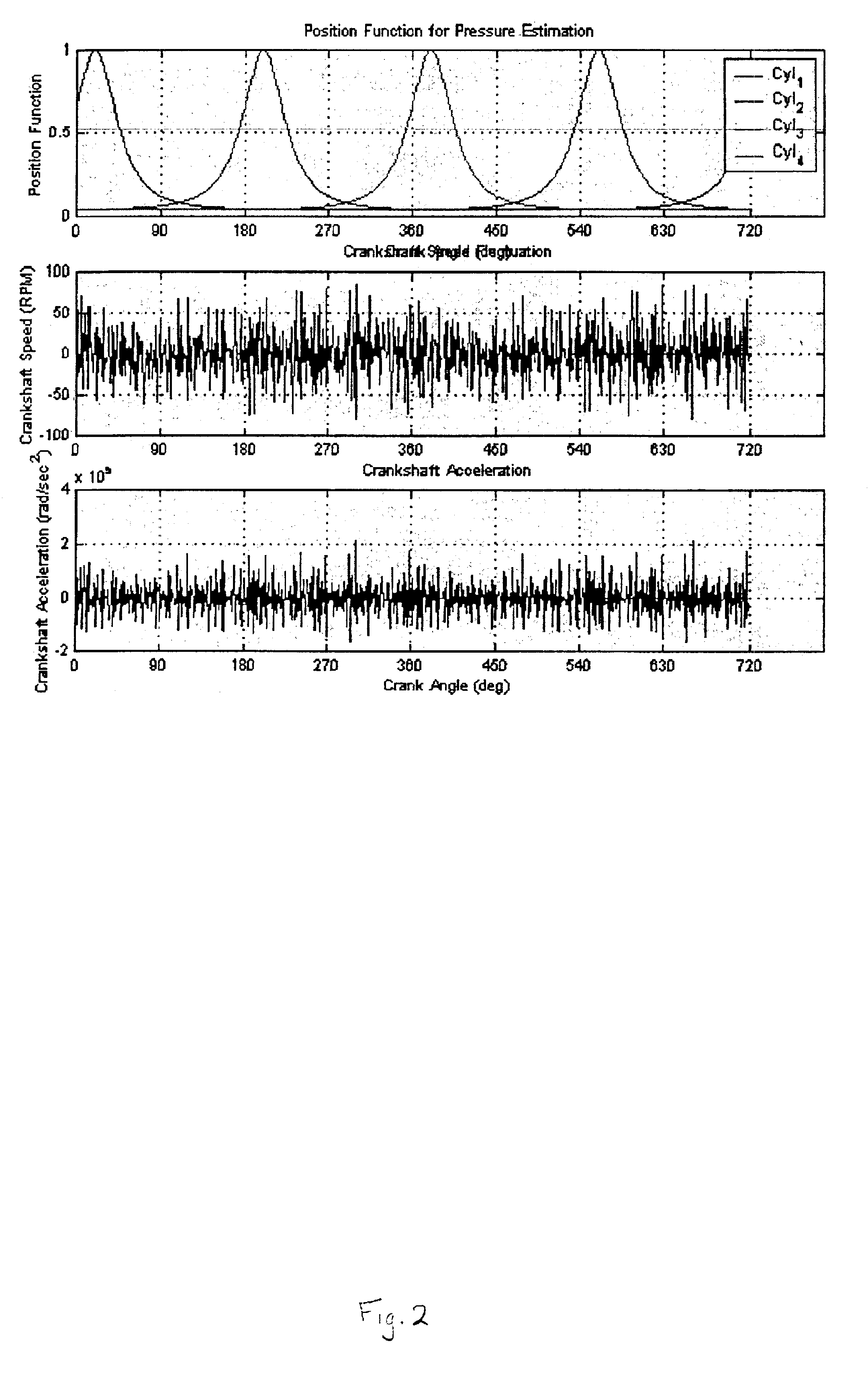Engine control using torque estimation
a technology of engine control and torque estimation, applied in the direction of electric control, machines/engines, instruments, etc., can solve the problems of not being able to achieve the practical application of fundamental performance variables in commercially produced vehicles, the crankshaft of an ic engine is subject to complex forces and torque excitations, and the direct measurement using conventional pressure sensors inside the engine combustion chamber is not only expensive but also not reliabl
- Summary
- Abstract
- Description
- Claims
- Application Information
AI Technical Summary
Benefits of technology
Problems solved by technology
Method used
Image
Examples
Embodiment Construction
Stochastic Estimation Technique
This technique is based on a signal processing method, herein referred to as the “Stochastic Estimation Method,” which allows extraction of reliable estimates based on the method of least square fittings from a set of variables which are statistically correlated (linearly or otherwise). The procedure originates from the signal processing field, and it has been used in a variety of contexts over the past years, particularly in the field of turbulence [1]. It has been primarily used for estimating conditional averages from unconditional statistics, namely, cross-correlation functions. The main advantage of this methodology compared to others is that all complexities of the actual physical system are self-extracted from the data in the form of first, second, or higher correlation functions. Once the correlation models are determined, the estimation procedure reduces to a simple evaluation of polynomial forms based on the measurements. Consequently, the es...
PUM
 Login to View More
Login to View More Abstract
Description
Claims
Application Information
 Login to View More
Login to View More - R&D
- Intellectual Property
- Life Sciences
- Materials
- Tech Scout
- Unparalleled Data Quality
- Higher Quality Content
- 60% Fewer Hallucinations
Browse by: Latest US Patents, China's latest patents, Technical Efficacy Thesaurus, Application Domain, Technology Topic, Popular Technical Reports.
© 2025 PatSnap. All rights reserved.Legal|Privacy policy|Modern Slavery Act Transparency Statement|Sitemap|About US| Contact US: help@patsnap.com



